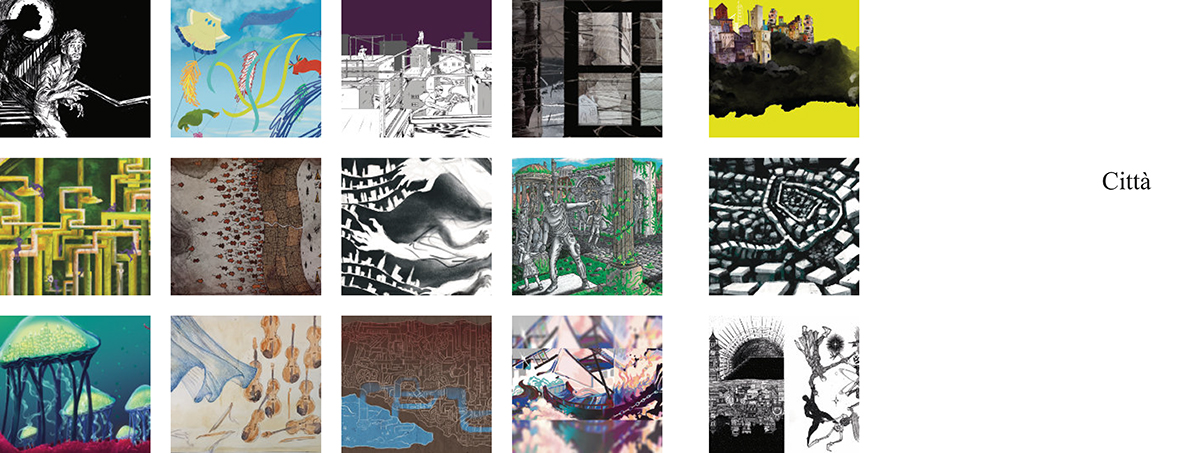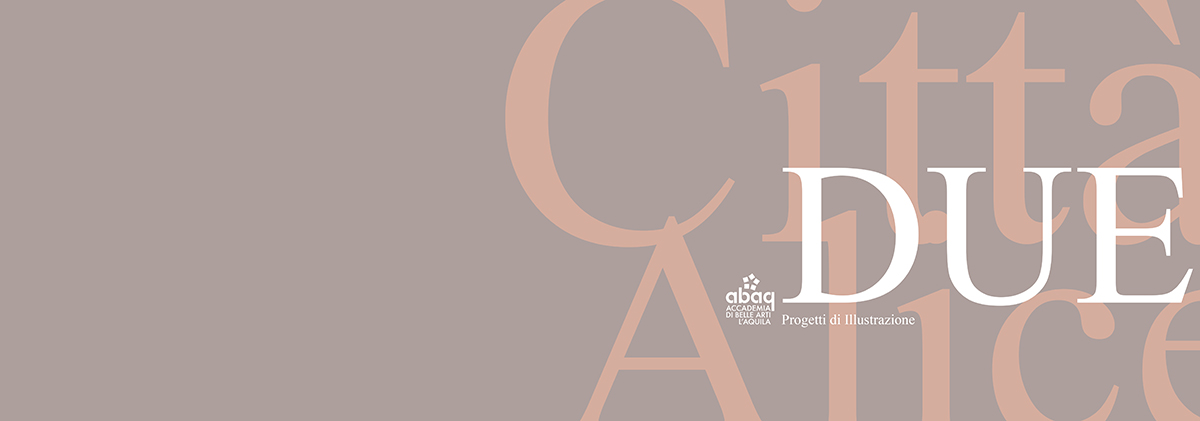TWO: The invisible Cities


Scopri di più su questa tecnica Find out more about this technique
The invisible cities of Italo Calvino (Einaudi, Turin, 1972) is a story built according to the combinatorial methods experimented by Italo Calvino when he came into contact with the ULIPO group in Paris in 1967. It consists of nine chapters, in which Marco Polo describes to Kublai Khan, Emperor of the Tartars, fifty-five imaginary cities with women’s names that embody our most hidden desires or fears, grouping them in eleven sections: «Cities and memory»; «Cities and desire»; «Cities and signs»; «Subtle cities»; «Cities and exchanges»; «Cities and eyes»; «Cities and names»; «Cities and the dead»; «Cities and the sky»; «Cities continue»; «Hidden cities». The succession of cities and sections does not imply a sequence or a hierarchy, but builds a branched network, in which multiple narrative paths and multiple conclusions are possible. The students of the third year of the Illustration course were confronted with the imagination of this labyrinthine text, dominated by fantasy and dream, creating fifteen tables freely inspired by the cities protagonists of the stories of Marco Polo. After reading the text, each of them identified key words, through which to interpret the chosen city. The invisible cities of Calvin are symbols of reality, and as such pose questions about the meaning of urban geographies and our ways of coexistence.
Prof.ssa Maria D’ALESIO
Director of the Academy of Fine Arts of L’Aquila
CITIES
Fifteen different cities, freely inspired by the “invisible cities” of Italo Calvino.
Fifteen free interpretations; where “free” implies deepening, evocation, representation.
Fifteen different personalities and backgrounds; different regions of Italy, Spain, China.
Fifteen different stories, fifteen different rooms in which children live, study, draw and imagine their city; a multitude of desires and goals; fifteen different possible futures.
A shower of words, adjectives, objects, impressions and images that guided everyone in imagining the drawing for their own illustration.
All the boys have launched themselves far beyond the simple representation of the text; they have gone into the depth of the lexicon, they have captured and fissato on paper the suggestion of the literary passages and the adventures of the protagonists; have consciously faced a disorienting creative drift to then lead everything to the realization of an image that was evocative, personal, surprising and professional.
Valeria Gasparrini
Each student identified some guiding words, and elaborated several sketches before arriving at the final image. This is the progression of Marta Di Giacomo; her guiding words are: deformed children, hiding reality



